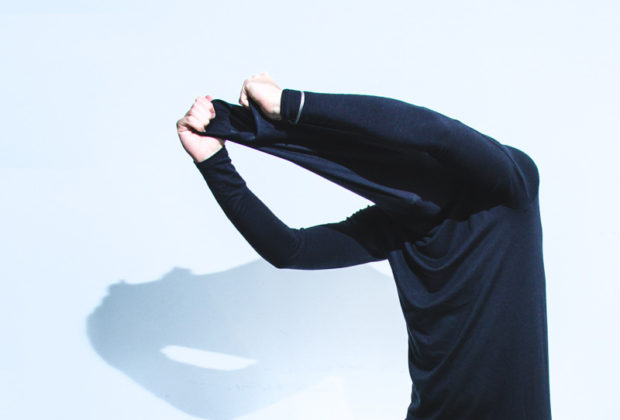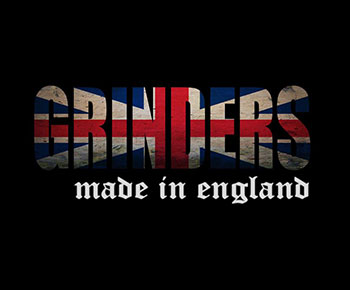The Evolution of Idolatry: Interview with Branimira Ivanova of HOI Clothing

The House of Idolatry or HOI, the clothing line created by former Chicago resident Branimira Ivanova, is for lovers of movement: dancers and gothsters, yogis and travelers; people changing from day to night as they move through life.
Born in Bulgaria and currently based in New Orleans, the HOI Owner and Designer, Hogan McLaughlin Technical Director, Interpreter of Design and Pattern Engineer, and former Hubbard Street Dance Center Costume Designer has moved seamlessly between professional roles and private passions for over 20 years.
So it’s no surprise that HOI was inspired in part by the necessities of dance in all its forms, the demands of a performer on stage aren’t that different from one at a goth club: ease of movement, versatility, color, and form.
KILTER magazine spoke with the designer about her inspiration, her relationship to the Chicago Goth scene and what’s she planning for her next move.
KILTER: So it’s 2002, you’ve just graduated from Chicago’s International Academy of Design and Technology (BFA, Fashion Design). You win Fashion Group International’s Design Your Future Award and the Driehaus Award for Fashion Excellence, and you’re in the Chicago Goth scene. How has the music, culture, and nightlife of the dark, alternative world inspired your design?
BI: Before HOI, my own line of clothing was very scene-driven. We presented at Nocturna (Scary Lady Sarah’s long-running dark alternative dance night in Chicago) in a multimedia-performance art-fashion show format. It was a collaboration with a bunch of lovely people I met at Nocturna, or through Sarah. One collection was based on Fetish wear and Degas’ Ballerinas, another- “Infusion” was entirely made from deadstock and left over fabric from the designer I worked for at the time, another was based on Punk/Industrial and medical “Cut-up”, and “Victorian Decadence” was based on Victorian Mourning dress.
KILTER: Your clothing told a story. As a costume designer, clothes have to be a vehicle of movement to tell that story.
BI: Yes, there is drama in the goth scene. The idea of costume is a concept I wanted to explore.

“Niebla” By Alejandro Cerrudo
© Todd Rosenberg Photography 2016
KILTER: When did the collaboration with Hogan McLaughlin begin? Do your visions complement each other?
BI: Hogan and I met at Hubbard Street Dance in 2008, where he was dancing and I was designing costumes. We began working together in 2011. We started with a corset for Daphne Guinness in September 2011, and each collection after that. I am grateful to have the opportunity to create his vision. It is pretty great to see him grow.
KILTER: You’re designing costumes for a celebrated dance company and patterns for an increasingly famous young designer– and you decide to start a new line of your own. What inspired this? (Not a desire to sleep obviously.)
BI: I initially designed under my own name, Branimira Ivanova, but toyed with the idea of idolatry. HOI came out of necessity about 5 years ago. It is inspired by music, travel, geometry, people in the dance, music, yoga, body work worlds. I became more active, and started to travel a hell of a lot, so comfort became a thing, and clothing to move in effortlessly- a must. I did not like anything on the market so I created HOI Clothing.
KILTER: The style is definitely more minimalist while retaining the dark aesthetic. Was this a gradual progression or a conscious choice from the beginning?
BI: HOI also became the counterpoint of working on super complex shapes with Hogan McLaughin. I wanted to explore simplicity and the opposite of extreme tailoring in draping, and how gravity affects the form.
KILTER: I love that your pieces are as utilitarian as they are goth/industrial. Can you talk about how your lifestyle influenced your fabric, cut, and design choices?
BI: HOI comes from my love of dance, movement, function, versatility, comfort, form, style, ethnic, simple shapes, dark aesthetics, Japanese designers, mixing Eastern and Western clothing, global appeal. Clothes that are easy to travel with, color fast, and long lasting. Skeleton yoga prints embody my love for both dark aesthetics and yoga. I hate the term “Athleisure” but I guess it is what some people describe it as, with an edge.
KILTER: In 2017 you moved from Chicago to New Orleans. We’re sad you left!
BI: My move to NOLA was actually due to my partner’s studio opening a NOLA location. I used to come here often, in the late 90s-early 2000s, and living in NOLA was a teenage fantasy, so I jumped at the opportunity. That said, New Orleans is a different beast these days, I am different, so the fantasy changed…
KILTER: I love that sentiment. That fantasies are living things, always changing. You have done and do so much, and simultaneously. Would you like to share any of the projects you’re currently working on?
BI: I just finished “Elemental” by Robyn Mineko Williams for Malpaso Dance Company from Cuba; “The Trees The Trees” by Robyn Mineko Williams at the Pacific Northwest Ballet in Seattle, “The Windless Hold” by Osnel Delgado (Cuba) for Hubbard Street Dance Company. I am working on a few new pieces for HOI Clothing and starting work on Hogan’s Spring/Summer 2020 collection to be presented at New York Fashion Week in September of this year.

